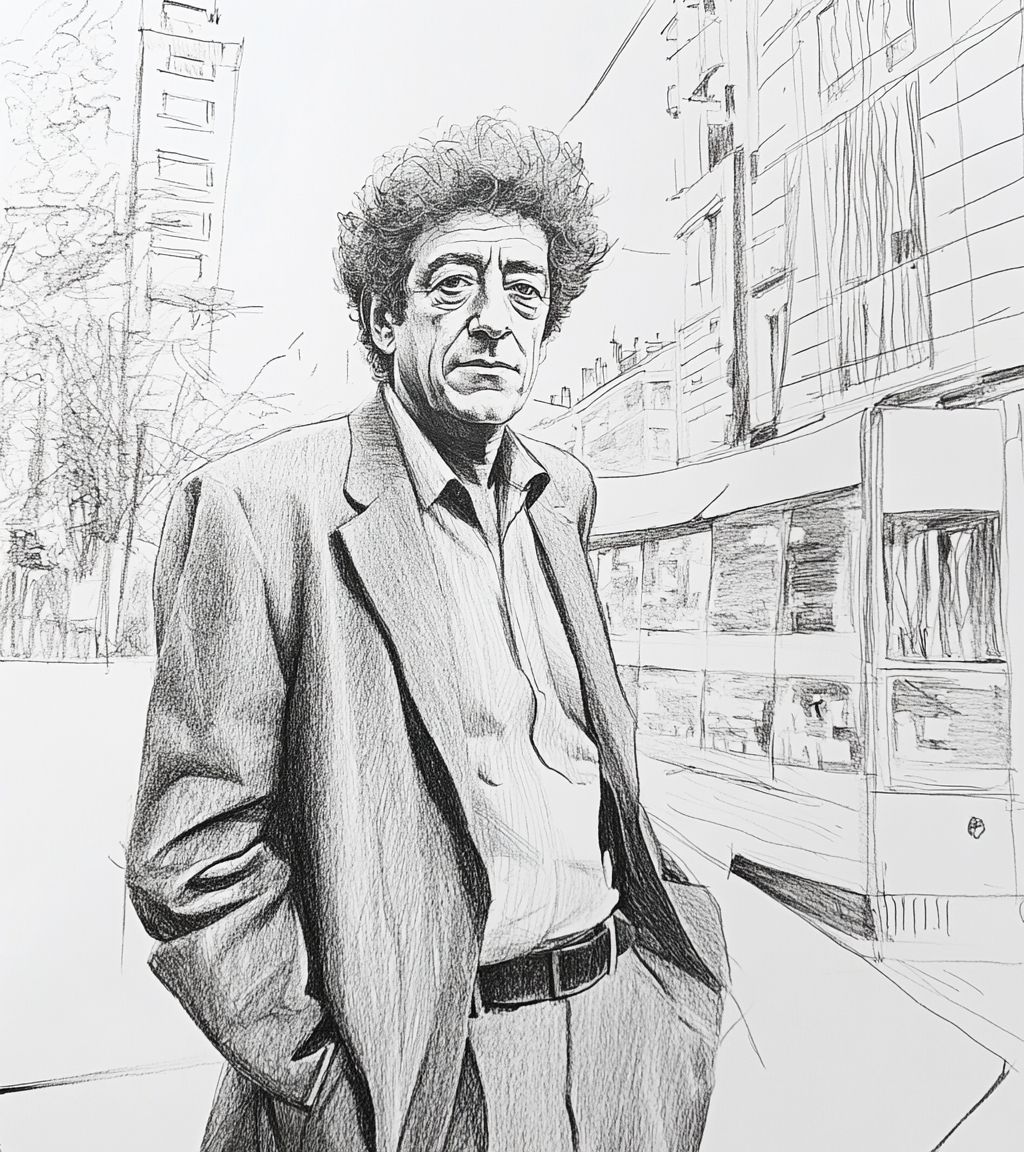
Alberto Giacometti
Alberto Giacometti was born into a family of artists — his father, Giovanni Giacometti, was a prominent Neo-Impressionist painter. He studied in Geneva and later moved to Paris in 1922, where he joined the studio of Antoine Bourdelle and became associated with leading modernist and Surrealist circles. In the 1930s, he explored dream-like and symbolic forms before developing the distinctive figurative style for which he is best known.
Giacometti’s mature work is defined by thin, elongated bronze figures, which often appear solitary and motionless — conveying themes of isolation, fragility, and existential presence. His most iconic sculptures include Walking Man I (L’Homme qui marche I) and Pointing Man (L’Homme au doigt). These works reflect his philosophical engagement with perception and presence, influenced by existentialism and phenomenology. Earlier in his career, Giacometti produced abstract and Surrealist works, as well as a vast number of expressive drawings and prints.
Among his most famous pieces are The Palace at 4 a.m. (1932), Gazing Head (1928–29), Pointing Man (1947), and Walking Man I (1960). Giacometti represented France at the 1956 Venice Biennale and received the Grand Prize for Sculpture at the 1962 Biennale. Major retrospectives have been held at MoMA in New York, Tate Modern in London, the Centre Pompidou in Paris, Kunsthaus Zurich, and the Fondation Giacometti in Paris, which holds the largest collection of his works.
Collected by major institutions and notable private collectors:
— Tate— The Museum of Modern Art
— Centre Pompidou
— Fondation Giacometti
Notable sales and auction records:
— L'homme au doigt, USD 141,2 million at Christie's, New York, 2015— L'homme qui marche I, £65 million at Sotheby's, London, 2010
— Chariot, USD 100,9 million at Sotheby's, New York, 2014
Artworks and Paintings
Unfortunately we don't have any artworks of this artist available at the moment. Please feel free to contact us and we will be happy to assist you in your search and acquisition of the artworks.
Biography and Artistic Career Highlights
Alberto Giacometti was born on October 10, 1901, in Borgonovo, canton of Graubünden, Switzerland, into the family of the painter Giovanni Giacometti. His childhood took place in a creative environment: his father was a well-known painter, and the atmosphere at home encouraged the development of artistic abilities. Already in his youth, Alberto began to draw and sculpt, showing an interest in form and space.
1919 — entered the School of Fine Arts in Geneva, where he studied painting and sculpture.
1922 — moved to Paris, studied at the Académie de la Grande Chaumière with sculptor Antoine Bourdelle, a pupil of Auguste Rodin. Began his own experiments in sculpture.
1925–1929 — worked in the style of Cubism and Surrealism; Giacometti entered the circle of Parisian avant-garde artists, forming ties with Jean Arp, André Breton, and Salvador Dalí. Created Surrealist compositions that attracted critical attention.
1930s — member of the Surrealist group, gained recognition in Parisian art circles. However, he soon distanced himself from Surrealism, returning to figurative art. Began searching for a new artistic language based on the observation of the human figure.
1938 — met philosopher Jean-Paul Sartre, and developed friendships with intellectuals who played an important role in shaping the understanding of his art. Elongated figures appeared in his works, which later became his “signature.”
1941–1945 — spent the years of World War II in Switzerland, continuing to work on small-scale sculptures.
1945 — returned to Paris; began creating his famous elongated human figures, symbolizing the fragility and solitude of man.
1948 — his first major solo exhibition in New York was a great success.
1950s — achieved international recognition: participated in the Venice Biennale, exhibited in Europe and the USA. Giacometti became one of the leading masters of postwar art.
1962 — awarded the main sculpture prize at the Venice Biennale. His works were acquired by the world’s major museums.
1960–1965 — created monumental sculptures for public spaces, deepening the philosophical themes in his art.
1965 — received the Grand International Prize for Painting at the Carnegie Institute in Pittsburgh.
On January 11, 1966, Alberto Giacometti died at the hospital in Chur, near his birthplace in Switzerland, from heart disease. He was buried in Borgonovo, his native village. His legacy became a symbol of the existential drama of the 20th century: Giacometti’s elongated, almost scorched figures embodied themes of solitude, vulnerability, and the spiritual quest of modern man.
